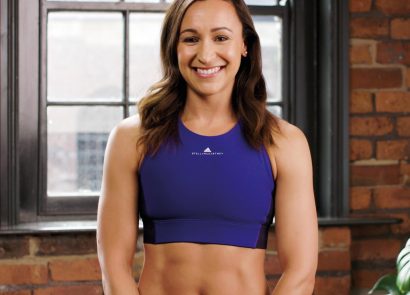Here’s something you might not know – crash diets are expensive. In fact, the average women spends a whopping £25,000 on diets over the course of her lifetime*. And, let’s be honest, how many times have you vowed never to eat chocolate again, only to be found devouring a large slice of choccy cake weeks later. It’s a common scenario, so much so that data shows the average diet lasts a mere 19 days. And the long-term weight loss prospects of yo-yo eating aren’t great either, with results in the Annals of Internal Medicine showing a typical dieter loses six percent of her weight but puts it back on after five years. There must be a way to keep stubborn pounds off for good. Actually, there is and it’s as simple as following a smart shape-up plan. To guarantee you hit the beach feeling confident this summer, we asked leading fitness experts for their best weight-loss tips. Blubber, be gone!
-
- EAT WELL It’s no secret that abs are made in the kitchen, but eating well doesn’t have to mean depriving yourself of delicious food. Find a doable eating plan that’s high in flavour and low in processed foods, and eat mindfully by taking the time to be aware of how hungry you really are. “To avoid sugar slumps, fuel your body with low-GI carbohydrates like steamed vegetables and basmati rice,” recommends Mark Lucas, personal trainer at Dolphin Fitness. “And eat plenty of good fats in the form of oily fish, avocados and raw olive oil – these send a signal to the brain that the body has sufficient fat, so there’s no need to store any.” Hurrah!
-
- EXERCISE HARD In case you didn’t get the memo HIIT (High Intensity Interval Training) boasts the ability to transform your physique by burning fat even after you’ve finished exercising. “Excess postexercise oxygen consumption (EPOC) is the term given to the after-burn effect,” explains Dean Hodgkin, fitness expert at Ragdale Hall (deanhodgkin.com). “When you perform a HIIT workout, EPOC causes your metabolic rate to remain elevated for hours after you exercise.” Science shows that Tabata workouts – 20 seconds of intense exercise followed by 10 seconds of rest repeated eight times – are super-effective, burning an average of 15 calories per minute. Jump-start your HIIT routine with the Tabata workout over the page.
-
- REST LITTLE Once you get used to HIIT workouts, try creating your own. Here’s the secret formula – use multijoint moves that challenge big muscle groups and keep the rest between moves to a minimum. “HIIT training is all about the recovery, or lack of it,” explains James Pisano, head trainer at new London gym Core Collective (core-collective.co.uk). “The idea is to push yourself for a designated time, such as 45-60 seconds, and rest little between moves. Don’t stop during each effort – get into the mind-set of finishing your sets!”
-
- GO HEAVY By now you know the benefits of HIIT training, but did you know that strength exercise can make your HIIT routine even more effective? “Resistance training results in a greater afterburn effect than cardio moves,’” explains Hodgkin. “It leads to extra calories being burnt and muscle growth, and muscle tissue is more metabolically-active than body fat.” Maximise the benefits of your interval workout by adding functional resistance kit, such as kettlebells, ViPRs and Bulgarian bags, into the mix.
-
- BUDDY UP Do you struggle with motivation? A workout buddy could provide the willpower you need to get through a tough session. In fact, science shows that women who exercise with a partner push their bodies harder. In fact, the study discovered that partnered fitbies cycled for 10 minutes longer than solo exercisers. “Try to train with a friend who is going to push you,” says Pisano. “I really like using this motivation technique and it’s something we utilise a lot in our Velocity class.”
- MIX IT UP Newsflash – do the same exercises for long enough and your body will get pretty darn good at performing them efficiently. This means you’ll burn less energy doing those moves – not good news. “Keep your routine varied by trying to use the entire body,” adds Pisano. “Don’t focus on one specific muscle group. For example, if you are performing a legs-orientated move like mountain climbers or squat jumps, make the next exercise an upper-body one.” Understood?
}




















